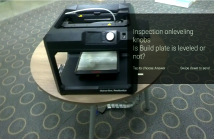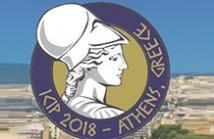

Image noise filters usually assume noise as white Gaussian. However, in a capturing pipeline, noise often becomes spatially correlated due to in-camera processing that aims to suppress the noise and increase the compression rate. Mostly, only high-frequency noise components are suppressed since the image signal is more likely to appear in the low-frequency components of the captured image. As a result, noise emerges as coarse grain which makes white (all-pass) noise filters ineffective, especially when the resolution of the target display is lower than the captured image.
- Categories:
 154 Views
154 Views
This paper addresses the problem of 3D human pose estimation when not all body parts are present in the input image, i.e., when some body joints are present while other joints are fully absent (we exclude self-occlusion). State-of-the-art is not designed and thus not effective for such cases. We propose a deep CNN to regress the human pose directly from an input image; we design and train this network to work under partial body presence. Parallel to this, we train a detection network to classify the presence or absence of each of the main body joints in the input image.
- Categories:
 20 Views
20 Views
This paper addresses the problem of 3D human pose estimation when not all body parts are present in the input image, i.e., when some body joints are present while other joints are fully absent (we exclude self-occlusion). State-of-the-art is not designed and thus not effective for such cases. We propose a deep CNN to regress the human pose directly from an input image; we design and train this network to work under partial body presence. Parallel to this, we train a detection network to classify the presence or absence of each of the main body joints in the input image.
- Categories:
 50 Views
50 Views
Object tracking is an active research area and numerous
techniques have been proposed recently. To evaluate a new
tracker, its performance is compared against existing ones
typically by averaging its quality based on a performance
measure, over all test video sequences. Such averaging is,
however, not representative as it does not account for outliers
(or similarities) between trackers. This paper presents a
framework for scoring and ranking of trackers using uncorrelated
quality metrics (overlap ratio and failure rate), coupled
- Categories:
 23 Views
23 Views
- Read more about Background Light Estimation For Depth-dependent Underwater Image Restoration
- Log in to post comments
Light undergoes a wavelength-dependent attenuation and loses energy along its propagation path in water. In particular, the absorption of red wavelengths is greater than that of green and blue wavelengths in open ocean waters. This reduces the red intensity of the scene radiance reaching the camera and results in non-uniform light, known as background light, due to the scene depth. Restoration methods that compensate for this colour loss often assume constant background light and distort the colour of the water region(s).
- Categories:
 48 Views
48 Views

- Read more about WHERE TO PLACE: A REAL-TIME VISUAL SALIENCY BASED LABEL PLACEMENT FOR AUGMENTED REALITY APPLICATIONS
- Log in to post comments
- Categories:
 33 Views
33 Views
- Read more about R-COVNET: RECURRENT NEURAL CONVOLUTION NETWORK FOR 3D OBJECT RECOGNITION
- Log in to post comments
Point cloud are precise digital record of an objects in space. It starts to getting more attention due to the additional information it provides compared to 2D images. In this paper, we propose a new deep learning architecture called R-CovNets, designed for 3D object recognition. Unlike to previous approaches that usually sample or convert point cloud into three-dimensional grids, R-CovNets does not reckon on any preprocessing. Our architecture is specially designed for cloud point, permutation invariant and can take as input, a data of any size.
R-COVNET.pdf
- Categories:
 46 Views
46 Views